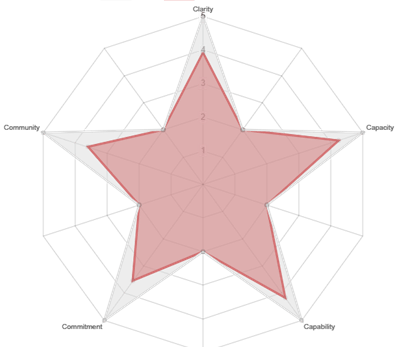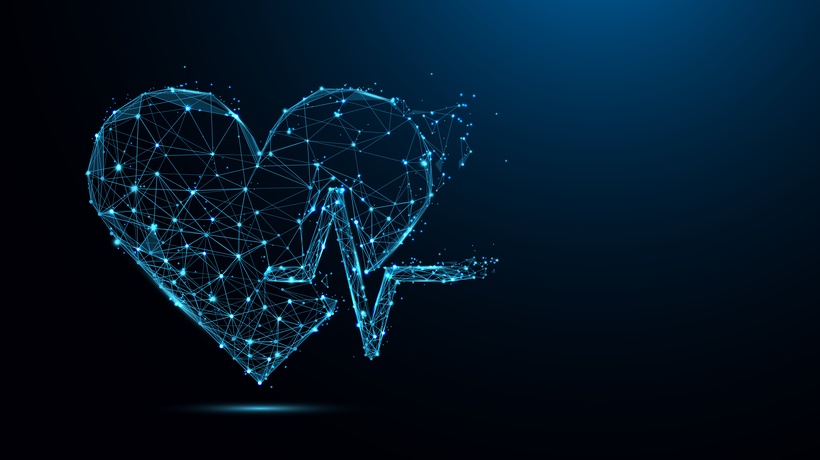Dealing With The Challenges Presented By COVID-19
When disruption occurs, sometimes there is a need to challenge existing paradigms. At other times, it may be about changing the current mindset to existing paradigms. It could even be a bit of both.
Let's start by examining the old fun/classic way of starting a practice race in training sessions. Many years ago whilst training young athletes, I realized that "ready, steady, go" induced the wrong mindset and needed to be adjusted to the more useful and productive mindset of "steady, ready, go."
Prior to the start of a race or an athletic event, the first thing that any athlete (the same applies to a team) needs to do is to steady themselves, to find an internal calmness that says, "The past is the past, this is a new event," "I have applied what could be learned from past successes and failures in my preparation," "I need to focus on the moment and be ready to give it my best go," and that "Succeed or fail, I will live to compete another day, and I will take what I learn from today to prepare for future improvement."
Does the above example have relevance in dealing with the challenges that COVID-19 has presented? Yes, I believe so!
2021: Reset And Go!
No! This would be folly. Let's think about it logically, using another example.
The captain of an airplane, who has just flown through an incredibly severe storm, lands the airplane and simply refuels and carries on with the next leg of the journey. Most of us would consider this reckless as he could be placing passengers, crew, and possibly public lives at unnecessary risk. After all, who knows what damage the storm could have done to the airplane?
The right thing to do would be to pause long enough to assess any potential damage, structural or systemic, to the airplane as well as to assess the well-being of the crew and the passengers. Any potential issues can then be dealt with appropriately so that the next leg of the journey can be started with confidence. If there is damage to the structure of the airplane, then it needs to be fixed. If there is systemic damage, it needs to be corrected. If crew and passengers have suffered physical, mental, or emotional trauma, they need to get the help required. It must be noted that the risk to the onward flight of the airplane can lie as much with relatively intangible issues (mental and emotional wellbeing of crew and passengers) as with the tangible ones. Finally, it may also be necessary to change the flight path or even the final destination.
The same applies to organizations that have weathered the COVID-19 storm. It is folly for them to simply reset (refuel), at the start of 2021, and carry on their mission. The status of both the organization's tangible and intangible asset bases should be assessed and remedial action taken as required so that the organization can move confidently forward.
Remember, an organization's sustainable health and performance is a function of both its tangible and intangible asset bases.
It is natural for executive teams to focus on the organization's tangible asset base as it is concrete and easily measured. Also, as such, the value-add of any investments of time, effort, and money can be relatively easily observed and measured. However, the organization's intangible asset base is equally important and should be assessed equally thoroughly and any required action taken.
An Organizational Case Study In Applying The Above Thinking
This is a real story about an amazing organization that steadied itself at the end of last year and used LMS technology to assess the status quo of the factors that affect organizational health and performance. Leadership also expressed a strong desire to take any required remedial action in order to be ready to "go" confidently into 2021 and the challenges that would surely be presented. This case study is about a healthy, high-performing organization that had adjusted its ways of working to the restraints imposed by COVID-19 and had seemingly "weathered the storm."
In this case study, leadership engaged a holistic analysis of the state of the dimensions (and their constructs) that deliver sustainable organizational health and performance. This revealed fractures that needed to be attended to. The methodology and process used in this case study were run on an LMS platform and are described in the article "Leaders: Listen To The Digital Heartbeat™ Of Your Organization."
On an ongoing basis, but even more so in turbulent times, organizations require all staff to contribute to the overall performance and health of the organization by bringing the full range of capability sets to bear. In this case study, leadership initiated self-assessments and 360-degree feedbacks to identify capability opportunities that staff members could work on in order to be better prepared to help their organization remain a healthy, productive, and high-performing one, given the disruption caused by COVID-19. This would also enable them to be better prepared for possible future disruptions, as well as new challenges in their competitive operating environment. The methodology and process used in this aspect of the case study are covered in the following article "To Survive And Prosper: The Complete Capability Set Imperative."
From an organizational perspective, all of the dimensions and their constructs that deliver sustainable organization health and performance were measured and graphed to show the current status quo. The outcomes for the entire organization are shown below (they were also available separately, by department). This outcome is shown in the first, larger STAR graph below. The smaller STAR graph illustrates the outcome of the measurement of the confidence that all of the employees had cumulatively in each other's overall capability to continuously build and evolve the dimensions that deliver sustainable organizational health and performance.

Figure 1
 Figure 2
Figure 2
Having a sustainable, healthy, high-performance organization that can swiftly and confidently adjust to future demands, requires both of these organizational stars to shine brightly and be in synch. The above presentation of the 2 stars, with the organizational star being "larger" than the cumulative employee capability star, is symbolic of "the whole being greater than the sum of its parts." The relevance and importance of this will be touched on briefly later.
The easy-to-read, easy-to-understand outcomes of both the assessments, together with more in-depth analysis were presented to the entire organization toward the end of 2020. This was done together with a commitment from leadership to involve everyone in dealing with opportunities identified so that the organization would be well prepared and confident to take on the challenges that 2021 would surely bring.
The following actions then took place:
- The leader of the organization was prepared to be vulnerable in front of the entire organization. She openly shared the feedback that she got regarding her capabilities. She also undertook to meet with the people who gave her the feedback to ensure that she understood the opportunity for improvement and committed to working hard on the identified opportunities. This brave act created a sense of trust for what followed. All staff was given confidential copies of the detailed analysis of their individual 360-degree feedback. They were asked to meet with the colleagues who had given this feedback to gain better insight into the opportunities presented. Each staff member was then required to choose 1-3 capability opportunities to work on and then share these with their team, with a commitment to work on such, report back to the team on progress, and solicit their feedback on "how they were seen to be progressing."
- More specific feedback was given to the leadership group as well as 4 facilitators who were charged with making the necessary action happen. From an overall organizational assessment perspective, the above larger graph reveals that the assessment of the dimensions that make up the organization's performance/operational systems (Capacity and Capability) was positive. However, the assessment of the dimensions that make up the human systems (sense of Community and Commitment) showed opportunities for improvement, which linked to a dilution in the overall Clarity score. It became apparent that the stresses caused by changing to unfamiliar remote ways of working and the accompanying sense of disconnection from each other and the organization showed in these areas. Regarding Clarity, there was consensus that everybody was clear about and identified with the organization's Purpose and the value-add to its beneficiaries (everyone was clear on exactly who they were and what the organization delivered to them).However, because of the changes introduced due to COVID-19, they felt as a group that they needed more clarity on "clear ways of doing things and how to interact for a comfortable way of working together." This linked to a factor that reflected in diluting the overall Commitment score in which, as a group, staff felt that they personally and nor were their colleagues living up to "making themselves great people to work with." Also in the area of Commitment, feedback revealed that "staff needed to more readily acknowledge when they needed help or disagreed" so that "leadership could more readily step in to provide help and resolve any disputes quickly." Finally, from improving the sense of Community perspective, staff felt that there was an opportunity to discuss and explore "decisions that they felt that they needed more influence over" as well as "how they could feel better about their efforts being recognized and valued."
- It was agreed that the most immediate opportunity for improvement lay in engaging with staff, through the facilitators, to clarify "clear ways of doing things and how to interact for a comfortable way of working together" and what specifically they needed to do to commit to "making themselves great people to work with." The facilitators were trained in the process of developing behavioral anchors with teams and using them to help teams to use these constructively to improve how they interact and behave toward each other.
- The facilitators also undertook to engage feedback sessions between team members on the progress they were making on the capabilities that they had committed to working on.
2021 Follow-Up
Follow-up early in 2021 revealed that staff had actively connected and engaged in the above exercises and had entered the new year confident in the organization's and their ability as a group to meet whatever challenges lay ahead. Discussion with leadership and the facilitators revealed a desire to find ways to maintain and improve the levels of staff connectivity so important to sustainable health and performance. Already each person had been designated a "care bear" to "look out for them and regularly check in on their well-being." A further opportunity was identified to ensure that staff remained connected. This was the creation of a POD system whereby all staff members were designated to a POD of colleagues (which would be changed from time to time) to meet with regularly. This was the feedback from the leader on their most recent POD meetings:
We had our second POD meet today. It was an F day (not the rude F); Frustrating (what did you find frustrating in the week); forgot (what did you forget or want to forget about from last week); funny (what happened that was funny); and, friendship (what was the special treat from your care bear).
There was one particularly hilarious story that keeps me chuckling, which reminds me of the importance of maintaining a sense of humor in challenging times.
Finally, and only for those of you who have a more technical interest in organizational development, empirical evidence is suggesting the following correlation in the specific models that were used in this case study.
The Leadership Organization Development model measures the status quo of the organization from an organizational performance and health perspective, in terms of the systems diagram below:

And, the holistic capability set model provides the means to measure the confidence that employees have in each others' cumulative capability across all 5 capability sets. Empirically, this seems predictive of the organization’s future health and performance. It is indicated that high levels in each of the 5 capability sets reflect employee confidence in their capability to work with each other to develop and evolve the corresponding 5 organizational dimensions that work in synch to create a sustainable, healthy, high-performance organization. This alignment is shown in the diagram below:

In the hypothetical example above, the assessment shows that staff has no confidence in each other's role capability and low levels of confidence in each other's corporate and performance capabilities. This would indicate that, even if overall organizational Capability, Capacity, and Commitment were previously high, something has happened (for example, major disruption?) for employee confidence in their corresponding capability sets to plummet. As such, these dimensions will probably be under severe pressure in the future unless urgent action is taken.
In Summary
Before leaders press the reset button and sally forth into 2021, they should "steady" their organizations and use LMS technology to involve all employees to assess the status quo of organizational health and readiness to perform. And, then to take the necessary action to be confident in their organization and peoples' readiness to move positively forward, continuously learning and improving along the way, as they adjust current good ways of working to new paradigms and find new ways of working, as required.
The other take out is that we should not wait for disruption. Rather, we should regularly steady our organizations. Then, assess, learn, and adjust so that they are ready to go confidently into what will always be a future with unknowns and potential disruptions. Also, there will be some major changes that live long after COVID-19 such as increasingly remote ways of working and learning, but this should not lead to becoming disconnected!
Finally, a word of warning. Leaders should beware of neglecting the intangible assets in their organization's sustainable health and performance formula. Perhaps Bill Michael, erstwhile chair of KPMG, would have fared better if he had taken cognizance of this. The article "Sharing A "Eureka" Insight" also serves as a reminder.






